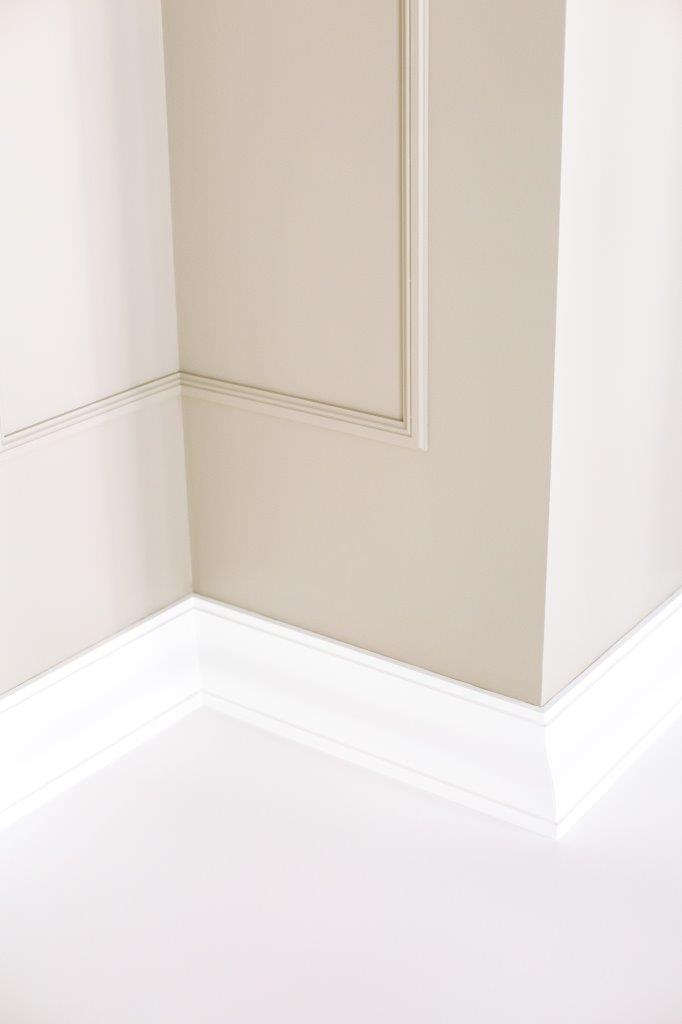Different types of MDF skirting boards - Choosing by finish and profile

Skirting boards may go unnoticed many times but, as you'd know, 'the whole is greater than the sum of its parts,' and that also applies to the interior finishes of your home. Pay attention and start noting how everywhere you go, walls and floors are joint by these thin panels all along. This is not just for the looks, but also for protecting your walls' surfaces and junctures.
When building or renovating, having a clear idea of how you'll choose the right elements for your house is key. We've created this guide to guide you through the process of deciding which type of MDF skirting board will suit you best.
The benefits of MDF -Medium Density Fibreboard
Even though there are many types of skirting boards, when it comes to choosing a material, the most popular nowadays is MDF -Medium Density Fibreboard. Manufactured from softwood fibres pressed together through different processes, MDF is affordable, withstands temperature changes without warping, resists moisture, has a smooth finishing -no knots-, it’s defect-free, and allows design versatility. The results? More aesthetic and polished interiors that look great and require little to no maintenance.
Skirting boards finishes - Primed, veneered, KOTA polymer coated, and fully finished
Once you are confident in choosing an MDF skirting board, it's time to get to the fun part! What you'll need to consider for your boards' finishes is if you are keen to get hands-on and do some of the work. In that case, choose a primed skirting board you can easily customize.
If, on the contrary, you are looking for an option that won't require any extra effort, you'll also have to decide which colour, height, style and texture will enhance your home's decor. In this case, you'd go for a fully finished foil skirting board. These come in a wide variety of tones and textures -from simple white to light or golden oak, and mahogany.
Another option for the ‘fully-finished’ enthusiast is to get KOTA polymer coated boards to ensure easy installation and a smooth, elegant finish -with no need to paint at all. A big perk of KOTA boards is how consistent these are in terms of colour, meaning your mouldings won’t go yellow after a while. These are also VOCs-free -VOCs are chemicals found in acetone and benzene, among other substances, which can be very harmful for your health.
Extra alternatives to consider are veneer MDF skirting boards. The main perk of veneered boards is that real hardwood flakes are included in the skirting's moulding, making these feel like real wood -without breaking the bank. You'll find that, usually, veneered boards come unfinished as most homeowners purchase them to match the exact style of their flooring.
The American white oak and black walnut veneer are currently the most in-demand boards of this kind.
Skirting boards profiles
The shape -known as 'profile'- of your home's skirting boards can become a subtle but powerful element of design. Torus, Ogee and Rounded One Edge are the most popular profiles. Those decorating a Victorian-era house, or looking for a more shabby-chic vibe, can make the most of an Edwardian, Georgian or Victorian profile. It's also possible to get creative in this arena as profiles also come squared, chamfered, and grooved.
Choose the perfect type of skirting board for your home
Now that you are well aware of all the different types of boards available in the market, it's time to find your ideal match!
- Assess the overall inner design of your house. Is it modern hence you need to go for a contemporary looking board? Do you have wooden flooring? What's the style of your window frames, sills, and furniture?
- Decide which style, profile and tone will match your budget and desired outcome. If you are a minimalist, a simple Burford profile on a finished white skirting board will be just perfect. On the other hand, if you are after a warm and elegant feeling, an American walnut veneer finish with an Ogee profile could be your go-to.
- Measure the length of the surfaces you'll be covering. Decide size, thickness, width and length.
- Estimate how many pieces you'll need to purchase with the Skirting Board's product calculator.
- Ask for a free sample, talk to an expert and get your order underway.
The Skirting Board Shop's Top Tip
Take a look at your ceilings. How tall are they? Keep this in mind when choosing the height of your skirting boards. By rule of thumb, tall boards and low ceilings can make a room look smaller. However, short boards and high ceilings can actually look great as these will open up the space even more!
 0800 048 0786 Monday - Friday, 8:30am to 4pm
0800 048 0786 Monday - Friday, 8:30am to 4pm
